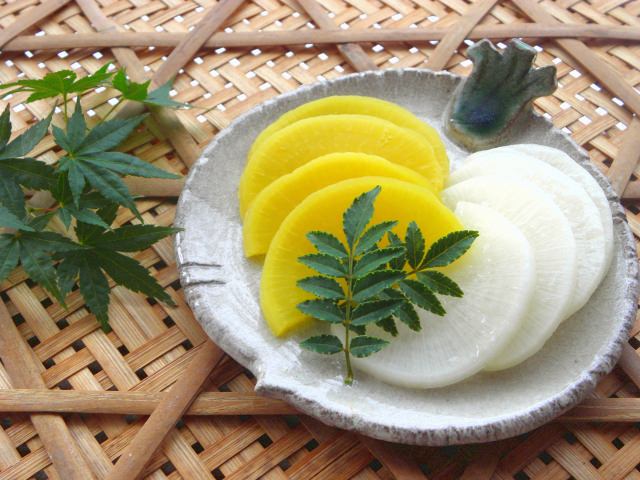-
- USA/Canada 1-800-285-2726
- Australia (02) 8006 4411

Tsukemono means pickled vegetables in Japanese, and the origin of tsukemono is said to date back to Japan's earliest periods. Surrounded by ocean, Japan developed its tsukemono culture in unique way. It isn't entirely sure when the Japanese first began making tsukemono, however, it is believed that the Japanese would leave vegetables out with sea salt, resulting in Tsukemono. Tsukeomono literally means thing to put on
and is often enjoyed as a side dish or with rice. As an official record, Tsukemono first appeared in Japanese history during the Tenpyo era (729-749). In these records, it was shown the Japanese made tsukemono with vegetables and sea salt. After the Tempyo era, Japanese culture was influenced more by international cultures from China and Arabic countries that came through the Korean Peninsula. This allowed for tsukemono to grow and adapt new flavors to the side dish. Tsukemono became more prominent in Japan's middle ages, as it spread to the commoners via tsukemono shops and vendors.

Currently, the tsukemono industry has earned over 60 billion dollars thanks to the love Japanese people have for tsukemono and the associated health benefits. While tsukemono is easily available for purchase in most supermarkets, shopping arcades, and even convenience stores, there are some people in Japan that choose to make their own tsukemono at home. The techniques and recipe vary from house to house, and are only passed down from family to family.
When you hear pickles, you might imagine sliced sour cucumbers in hamburgers. However, Japan has a wide variety of tsukemono types, such as picked vegetables with salt, miso, soy sauce, and mustard. Tsukemono can also be classified based on the amount of time spent being preserved. Some tsukemono are only pickled for 1 to 2 days, while others are preserved for 1 to 2 months. In some cases, there are tsukemono that are preserved for up to 5 years. Similar to wine, it is believed the longer time spent, the better the taste becomes. There's also variety to the flavors based on regions and climate. It would be fair to compare tsukemono to cheese in Western countries.
It's easy to purchase delicious tsukemono during your vacation with Japan Deluxe Tours. Pick up some local tsukemono while exploring the shopping arcade of Asakusa, Tsukiji Fish Market, or the Takayma Morning Market during our fully-guided small group Cherry Blossom Japan Tours & Takayama Festival vacation packages!
Mangoes famous for its delicious, sweet taste
Osechi Ryori are traditional Japanese New Years dishes served in jūbako
Breaded, deep fried pork cutlet served with tonkatsu sauce
Consists of noodles, soup, toppings, each with a great variety of choices
Umeboshi is a typically traditional pickled Japanese plum. It's necessary food to Japan's dining.
Kimchi is a popular dish in Korea that has made it's way as a favorite among many Japanese.
Japanese horseradish, most commonly served with sushi
Nori is a type of edible Japanese seaweed, popular in Japan.